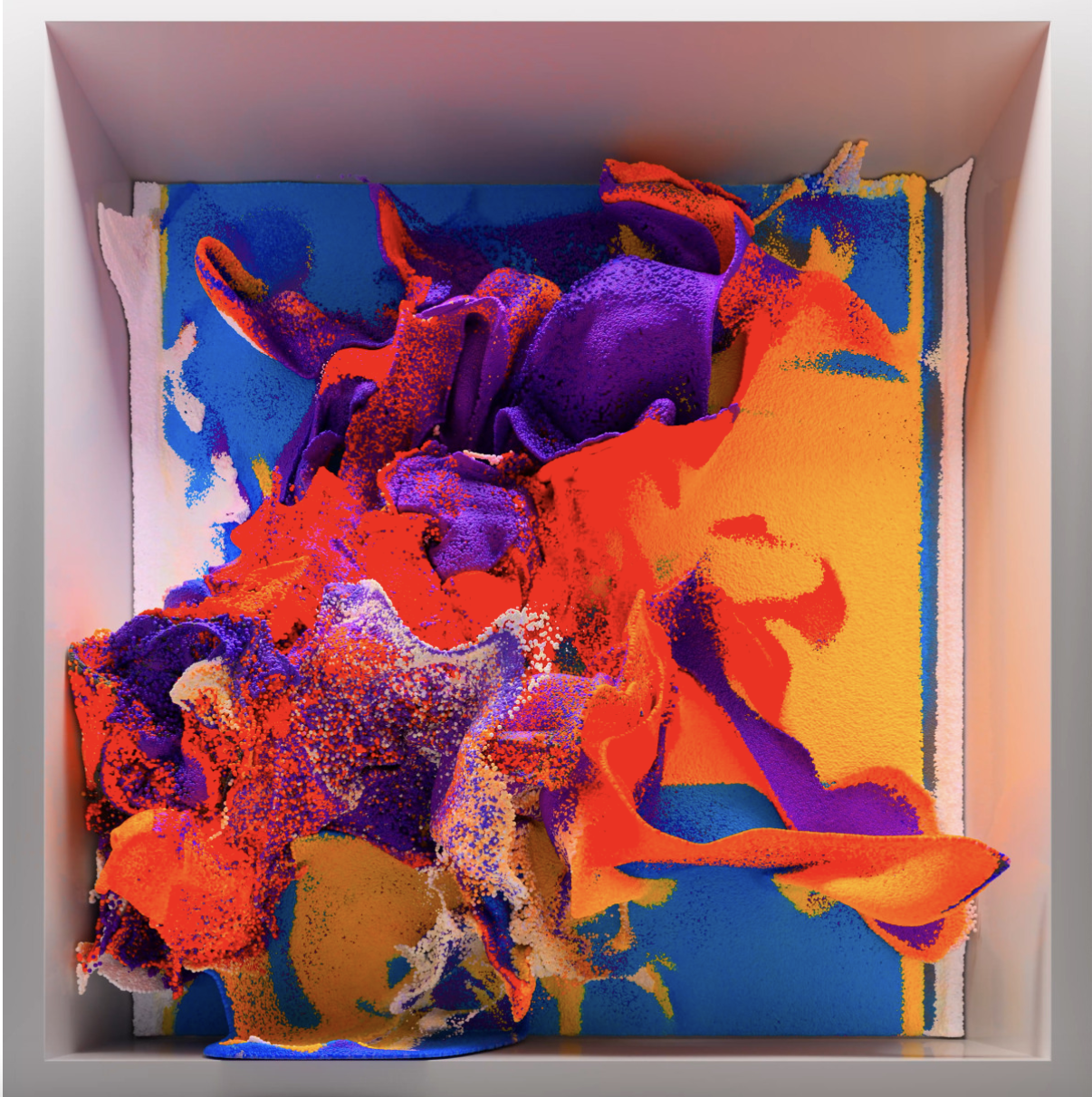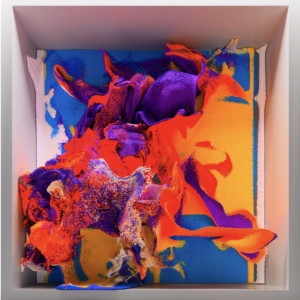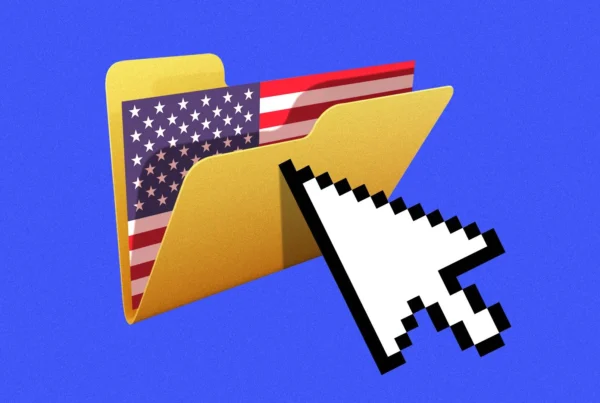“A world without literature would be a world without wishes or ideals or contempt, a world of automatons deprived of what makes humans beings truly human: the ability to leave oneself and become another, become others, modelled with the clay of our dreams. – Mario Vargas Llosa, accepting his Nobel Prize, 2010
A common reaction to modernist art has always been “I could do that.” Rothko, Newman, Mondrian, Delaunay; modernists have repeatedly been told that their art is basic, simple, replicable; in short, “not art.”
So I hesitate to critique artists who employ AI in their work. Who am I to say that their creations are not art? Art, being such a broad concept, is open to interpretation, and time has taught us that those who dare to call emerging movements “not art” will be ridiculed in the future.
Yet, whenever I look at art created by AI, I feel a pit in my stomach – a feeling that what I am looking at is nothing of substance. Coming from a self-proclaimed Susan Sontag-ist – a believer of the inherent lack of meaning in art, and in the nonnecessity of interpretation of art – this seems to be ironic. However, after giving it a second thought, I believe that my line of thought is consistent.
It is precisely the fact that art created through AI seems, to me, not to inspire a carnal, raw, interpretation-less feeling in me that I can nail it down to “not being art.” Art created through AI seems to require interpretation to find “value” (and I use the word “value” loosely; I firmly believe that art does not have to be “valuable” to be valued; see Ordine’s The Usefulness of the Useless) and as such, seems to lack something.
Borrowing a term from Walter Benjamin and his fantastic The Work of Art in the Age of Mechanical Reproduction, it seems to me that art created through AI has no “aura.” Benjamin described this aura as a work’s “presence in time and space,” stating that mechanical reproduction devalues this aura. In the search for mass consumption of art, through incessant reproduction, export, and decontextualisation, Benjamin believes that the artwork itself becomes devalued.
Although Benjamin wrote about the aura of a work of art being devalued as it was reproduced en masse, it seems to be that the aura of art as a whole (or, rather, the art created through AI), is depreciating.
Benjamin, writing during the eve of the Nazi regime, spoke of this devaluation as occurring through the medium of reproduction itself: it was the camera, the press, the medium itself which attenuated the art through reproduction outside of its physical and temporal context.
However, I argue that today, the camera,for instance, has created its own temporal and physical context. The lack of context has become a context in and of itself. We no longer feel that a photo taken in Bali and showcased in Madrid has no context, and thus is not art. Instead, the discrepancy between the context of art creation and the context of art reception play together. They merge into one single context for the work of art, not devaluing the art, but rather enriching it.
Therefore, I am cautious to blame AI itself for this devaluation of the aura of art. Despite what many of AI’s critics are saying, it is not that the AI itself is removing context from art. There is nothing inherently “artless” about AI. Just because it is a computer process helping in the production of the art does not mean it is not art, or that the aura is inherently devalued by the lack of “humanness” in the productive process. Indeed, AI is creating a new context within which art can be made. And yet, the aura is devalued.
It may be that rather than AI removing context from the art it generates, and thus leading to a devaluation of the art’s aura, there is an issue on the human side. There seems to be no expressive authenticity (to borrow another term from thinkers smarter than I) in the creation of AI artwork.
Art created through AI does not seem to have any real artistic intent behind it. Of course, I am painting with broad brush strokes here; there may be exceptions to this statement, but art created through AI seems to be created for the mere sake of using AI, for the novelty of the medium, rather than attempting to create something with meaning.
Dechamp, unlike AI artists, had a message to portray with Fountain. In mocking traditional art, despite his critic’s opinions, Dechamp held expressive authenticity behind his work.
Again, as a believer that art should not be interpreted, this seems to be a hypocritical point. However, it is not the interpretation of Fountain that makes it a work of art, but rather the authenticity behind its creation. This is what art created with AI lacks.
This may be a virtue of AI’s infancy, and the infancy of the AI art field as a whole, but the vast majority of AI art seen across the internet seems soulless, driven by monetary ambitions, and by a desire to act against the mainstream. AI artists exalt the new potential of AI, as well as its ease of use, as a key reason to consider it “real art,” which seems incongruent. It is not the novelty or ease of a medium that makes a work art, but rather the message behind it. While some theorists (namely McLuhan and Fiore) would argue that the medium itself is the message (or the “massage,” as they argue in The Medium is the Massage, saying that the medium “massages” your senses, conveying a message), this does not seem to apply to AI. The medium of AI is not necessarily present in most AI art.
Unlike other innovative mediums throughout history, AI attempts to mimic non-AI art. By virtue of attempting to remove the medium from the work, or rather, pretend it was created through a different medium, this message – or “massage” – is totally lost. AI artists, in using AI to replicate traditional forms of art, do not create a new form of interaction with art, a new “massage” for humanity’s senses, rather rehashing old methods of interaction; but this is not the fault of the AI programme itself, but instead the fault of the users of the programmes.
Jerry Saltz possibly put it best when he critiqued Refik Anadol’s “screensaver” art displayed at MoMA: “I love AI art. I love all tools & technologies! I am merely criticising an artist’s work for what it does with their material & tools.”
It is not AI that creates bad art. Rather, it is bad artists, using AI as a cheat code into the world of art, who devalue the field as a whole.
Blame people, not robots.
Other posts that may interest you:
- The Trouble with ‘Ecocide’
- Carbon dioxide removal – hit or miss?
- Local Victories for Turkish Opposition — A Sign of Hope?
- Are France and Japan a Mismatch Made in Heaven?
- A Reflection on Dark Tourism
Discover more from The Sundial Press
Subscribe to get the latest posts sent to your email.







AMAZING BREAKDOWN AND PERSONAL ANALYSIS OF THE BLOOMING WORLD OF AI ART AND HOW IT HAS SPROUTED FROM THE FORTE OF REAL MEDIUM ART. LOVE THE THEORIZING, ESPECIALLY THE MESSAGE MASSAGES. DONE ONLY BY THOSE WITH FINGERS USING TOOLS AT THEIR DISPOSAL- BLAME PEOPLE NOT ROBOTS. PERFECTO 👌🏽